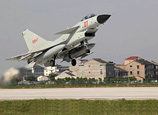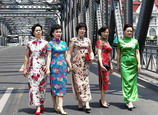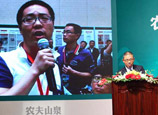
When I deplaned at Beijing’s Capital Airport on a crisp March afternoon in 2010, it was with an exhilarating sense of closing a big circle in my Asian journey. I was finally going to meet China face-to-face, to see her with my own eyes. During my 27 years with the United Nations System, I had been living and working in a number of countries surrounding China. China was always only a few steps away on the map.
Working for the United Nations System in developing countries requires one to develop an understanding of host countries from the inside out, as well as the outside in. What I mean is that in addition to grasping the basic elements of a country’s history, socioeconomic performance and ways of working, one must develop an understanding of a country’s inner personality, its heart and soul, what makes it tick, the main frames of reference, the symbols, the grand narratives, and people’s hopes, dreams and aspirations. This is, of course, easier said than done. Nevertheless, it is our constant quest because only in this way can the United Nations be truly helpful to our host countries. Only in this way can we successfully bridge international experience with national needs.
To say that trying to cultivate an inner understanding of China proved much more difficult than I anticipated is an understatement. During my three years here I picked up glimmers of understanding from beneficiaries of our development projects across the country, from encounters with government officials, academics, China specialists, etc.
Great emphasis in China has recently been placed on the need for innovation. At the just completed 12th CPPCC, Party Secretary Xi Jinping himself emphasized the importance of innovation-driven development for accelerating the transformation of China’s growth pattern. China’s leaders know that as the country develops, its challenges become ever more complex, and that the country as a whole must cultivate a culture of innovative thinking and problem solving to adequately tackle the challenges and transitions ahead.
From my experience in other countries, I often look at a country’s innovative capability from three angles: the education system, the socio-cultural and political space for individuals and groups to express their views and ideas, and, a government`s ability to reach out to its citizens, consult them, involve them in deliberations on issues that affect them, and encourage people and communities to take initiatives to solve problems themselves. This can release waves of creative and innovative thinking that enriches decision making in the public sphere and, equally important, it can generate enthusiasm and a sense of common purpose among the public.

















 Fishing fleet sets sail for Nansha Islands
Fishing fleet sets sail for Nansha Islands


![]()
